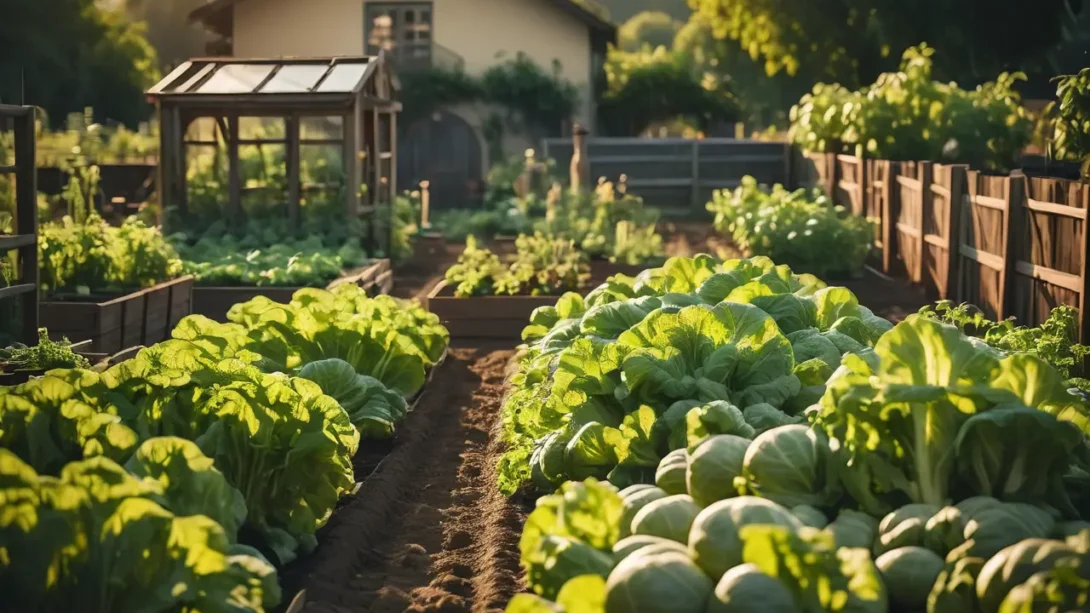Cucumbers are a staple in vegetable gardens, cherished for their refreshing flavor and versatility in the kitchen. Growing cucumbers in raised beds offers numerous advantages, including improved drainage, easier pest management, and better control over soil conditions. This guide will walk you through the essential steps to successfully plant and cultivate cucumbers in a raised bed, ensuring a bountiful harvest.
Planning Your Raised Bed
Size and Location Considerations
When planning your raised bed for cucumbers, size and location are crucial. Ideally, the bed should be at least 12 inches deep to accommodate the roots of cucumber plants, which can spread extensively. A location that receives at least 6 to 8 hours of sunlight daily is optimal, as cucumbers thrive in warm conditions.
Soil Preparation
The soil in your raised bed should be rich, fertile, and well-draining to support the vigorous growth of cucumbers. A recommended soil mix includes one-third compost for organic matter, one-third topsoil, and one-third aeration components like perlite or vermiculite. This mix ensures your cucumbers have the nutrients they need while preventing waterlogging.
Ensuring Proper Drainage
Proper drainage is key to preventing root rot and other moisture-related diseases. If your raised bed doesn’t have a built-in drainage system, consider lining the bottom with gravel before adding your soil mix. This helps excess water escape, keeping your cucumber plants healthy.
Choosing Cucumber Varieties
Different Types of Cucumbers
Cucumbers come in various types, including slicing, pickling, and specialty varieties. Slicing cucumbers are large and perfect for fresh consumption, while pickling varieties are smaller and have thinner skins, ideal for preserving. Bush types are suited for smaller spaces, whereas vine types require more room but can be trained to grow vertically, saving space.
Selecting Varieties
When choosing cucumber varieties for your raised bed, consider factors such as disease resistance, growth habit, and your personal taste preferences. Varieties like ‘Marketmore’ are known for their disease resistance and consistent production, while ‘Bush Champion’ is ideal for smaller beds due to its compact growth habit.
Timing and Temperature
Best Time of Year to Plant
The best time to plant cucumbers depends on your climate zone. Generally, cucumbers should be planted after the last frost when the soil has warmed to at least 60°F. This typically falls in late spring or early summer for most regions.
Soil Temperature Requirements
Cucumber seeds require warm soil to germinate effectively. Using a soil thermometer, ensure your raised bed’s soil is at least 60°F before planting. If you’re eager to start early, consider warming the soil with black plastic or fabric row covers.
Planting Cucumber Seeds
Once your raised bed is prepared, and the soil temperature is just right, it’s time to plant your cucumber seeds.
Depth and Spacing Guidelines
For optimal growth, plant cucumber seeds about ½ to 1 inch deep in the soil. Space the seeds about 6 inches apart in rows, with each row spaced at least 1 foot apart. This spacing allows for adequate air circulation and room for growth, especially important for vining varieties that can spread extensively.
Direct Seeding vs. Transplanting Seedlings
While cucumbers can be sensitive to root disturbance, starting seeds directly in the raised bed is often recommended to avoid transplant shock. However, for those with shorter growing seasons, starting seeds indoors and transplanting young seedlings can extend the growing period. If transplanting, handle the seedlings with care, and ensure they are hardened off before moving them outdoors permanently.
Watering Requirements
After planting, water the seeds gently but thoroughly to moisten the soil without causing erosion. Keep the soil consistently moist but not waterlogged as the seeds germinate and seedlings begin to grow. A soaker hose or drip irrigation system can provide even, direct watering that keeps leaves dry and helps prevent disease.
Supporting Cucumber Plants
As cucumbers grow, providing support can help maximize space, increase air circulation, and reduce disease exposure.
Benefits of Using Supports
Supports such as trellises, cages, or stakes encourage cucumbers to grow vertically, which is especially beneficial for vining varieties. This method can save space in your raised bed, improve sunlight exposure, and make harvesting easier.
Installing Supports
Install supports at the time of planting or shortly after seedlings emerge to avoid disturbing the roots later on. For trellises, ensure they are securely anchored in or next to the raised bed to support the weight of the plants as they grow. Cages or stakes can be placed directly next to each plant or used to support groups of plants.
Training Cucumbers to Grow Vertically
As cucumber plants develop, gently guide them onto the support structures. For vining varieties, you may need to tie the stems loosely to the trellis with soft ties or strips of cloth. Bush varieties will benefit from cages that help contain their growth while keeping fruits off the ground.
Maintenance and Care
Proper maintenance is key to healthy, productive cucumber plants. Here are some essential care tips:
Watering
Cucumbers require consistent moisture for steady growth, especially once flowers and fruits begin to form. Aim for about 1 inch of water per week, either from rainfall or supplemental watering. Mulching around the plants can help retain soil moisture and regulate temperature.
Fertilization
Cucumbers are heavy feeders, so applying a balanced fertilizer a few weeks after planting can promote vigorous growth. Additionally, side-dressing with a nitrogen-rich fertilizer once the plants start flowering can boost fruit production.
Mulching
Applying organic mulch around cucumber plants helps conserve moisture, suppress weeds, and add nutrients to the soil as it breaks down. Straw, shredded leaves, or grass clippings are excellent mulch choices for cucumbers.
Pest and Disease Management
Cucumbers are susceptible to a variety of pests and diseases, but with proper management, you can keep your plants healthy and productive.
Common Pests
- Cucumber Beetles: These pests can damage leaves and spread diseases. Use floating row covers to protect young plants and consider organic pesticides if necessary.
- Aphids: Aphids can be controlled with a strong spray of water from a hose or by introducing beneficial insects like ladybugs.
Common Diseases
- Powdery Mildew: This fungal disease appears as white, powdery spots on leaves. Ensure good air circulation around your plants and consider using fungicides or baking soda sprays as preventative measures.
- Downy Mildew: Characterized by yellow, mottled leaves with fuzzy undersides. Plant resistant varieties and water in the morning to allow leaves to dry out.
Preventative Measures
- Rotate crops annually to prevent soil-borne diseases.
- Keep the garden area clean and free of debris to minimize hiding spots for pests.
- Water at the base of plants to keep leaves dry and reduce the risk of fungal diseases.
Harvesting Cucumbers
Knowing when and how to harvest cucumbers will ensure you get the most out of your raised bed.
Signs of Readiness
- Cucumbers are best harvested when they are medium-sized, firm, and uniformly green. Overripe cucumbers can become bitter and seedy.
- Pickling varieties are typically harvested at 2-4 inches in length, while slicing cucumbers are harvested when they are 6-8 inches long.
Harvesting Technique
- Use a sharp knife or pruning shears to cut the cucumber from the vine. Avoid pulling or twisting to prevent damage to the plant.
- Harvest cucumbers early in the morning when temperatures are cooler for the best flavor.
Storage and Preservation
- Fresh cucumbers can be stored in the refrigerator for about a week. For longer preservation, consider pickling or fermenting.
Troubleshooting Common Issues
Even with careful management, you might encounter a few challenges:
- Yellowing Leaves: Often a sign of overwatering or poor soil nutrition. Adjust watering practices and consider a soil test to determine if additional fertilization is needed.
- Bitter Fruit: Bitterness in cucumbers can be caused by stress, such as uneven watering, extreme temperatures, or nutrient deficiencies. Ensure consistent care and consider varieties known for their non-bitter fruit.
- Poor Fruit Set: This can result from inadequate pollination. Encourage pollinators by planting flowers nearby or hand-pollinate flowers using a small brush.
Conclusion
Growing cucumbers in a raised bed is a rewarding venture that can yield an abundance of crisp, tasty vegetables throughout the summer. By carefully selecting varieties, providing proper care and support, and managing pests and diseases proactively, you can enjoy a successful cucumber harvest. Remember, gardening is a learning process, and each season brings new opportunities to refine your techniques and explore different varieties.



